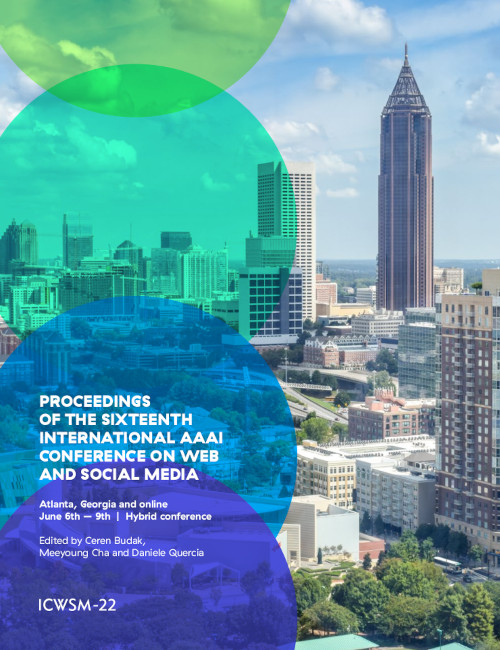On the Context-Free Ambiguity of Emoji
DOI:
https://doi.org/10.1609/icwsm.v16i1.19393Keywords:
Web and Social MediaAbstract
Due to their pictographic nature, emojis come with baked-in, grounded semantics. Although this makes emojis promising candidates for new forms of more accessible communication, it is still unknown to what degree humans agree on the inherent meaning of emojis when encountering them outside of concrete textual contexts. To bridge this gap, we collected a crowdsourced dataset (made publicly available) of one-word descriptions for 1,289 emojis presented to participants with no surrounding text. The emojis and their interpretations were then examined for ambiguity. We find that, with 30 annotations per emoji, 16 emojis (1.2%) are completely unambiguous, whereas 55 emojis (4.3%) are so ambiguous that the variation in their descriptions is as high as that in randomly chosen descriptions. Most emojis lie between these two extremes. Furthermore, investigating the ambiguity of different types of emojis, we find that emojis representing symbols from established, yet not cross-culturally familiar code books (e.g., zodiac signs, Chinese characters) are most ambiguous. We conclude by discussing design implications.Downloads
Published
2022-05-31
How to Cite
Częstochowska, J., Gligorić, K., Peyrard, M., Mentha, Y., Bień, M., Grütter, A., Auer, A., Xanthos, A., & West, R. (2022). On the Context-Free Ambiguity of Emoji. Proceedings of the International AAAI Conference on Web and Social Media, 16(1), 1388-1392. https://doi.org/10.1609/icwsm.v16i1.19393
Issue
Section
Poster Papers

